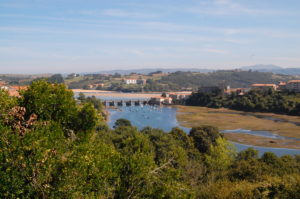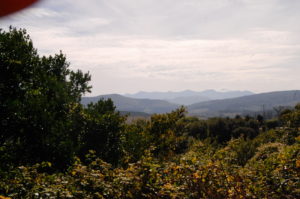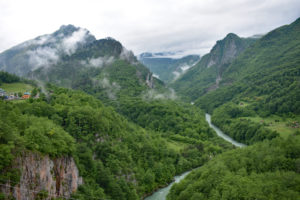As many millennia back as our era claims centuries there were people living in the limestone caves of Cantabria and Asturias. Primitive they were not. A vision any renaissance artist would have been glad to have enabled them to see in the irregular rock forms of their caves an image of one of the animals they hunted, for food, clothing and utensils. Over tens of thousands of years they developed their artistic skills and, we have to accept, other means of communication.
The most famous Spanish cave is Altamira: its artwork was begun before any other in Europe, as even the French (who thought Lascaux was first) have had to acknowledge. Today the actual cave is closed to all but a very few visitors. This is to prevent the art – we have to call it such – from deterioration owing to the air we breathe and the other pollutants we may carry with us. Nearby, as at Lascaux, a facsimile has been created. Though I have never seen the original I did see the paintings at Tito Bustillo cave in Astrurias the week before and was convinced that the reproduction was the best it could be. The digital technology used to create it is mind-boggling, especially to one who has problems sending photos as attachments.
Our party was given an enthusiasistic introduction by a Spanish-speaking English guide, who explained the technicalities and the animations of Stone Age life we were to see. Entering the realisation – no other word will do – we were as in the cave itself, looking towards its mouth. This was very different to Tito Bustillo because there the visitors’ entrance had to be created, as the original cave entrance was on top of a hill and the painters had descended like the pot-holers who discovered it in 1968.
The floor of Altamira is accurately reproduced, just like the walls and ceiling. We saw a family at work in the first animation before going down to where the paintings began. The uneven rock face had been transformed into three-dimensional bison, deer and horses, using scratched lines to enhance forms and vegetable charcoal and clay to create naturalistic colour, The vegetable charcoal has enabled dating of the work to several different periods between 20,000 and 12,000 years ago.
It is obvious standing there that the paintings were not all made by people in upright postures. Crouching and even Michelangelo-like supine positions had been needed. Close proximity to the rock face had not distorted the images, however. Nobody can see these and not marvel at the ingenuity and sophistication that went into their making. As at Tito Bustillo, each image was fixed in the artist’s mind before work was begun. No hesitation or second thought would have been possible. Our equivalent would be water colours. The rhythm of the work is stiil invigorating.
Photography is not permitted in the neo-cave, but some photos were possible in the museum. Here examples of implements as well as images are displayed. There is also a diorama of human development from then to now with attendant ecology alongside. It is a museum that would repay long attention, although the neo-cave may only be visited for a brief period. As at Tito Bustillo a first visit arouses the appetite for more another year.
The two-for-one, however, was the nearby medieval town of Santillana del Mar. This is still a working place, despite the hordes of tourists. A tractor came through one of the two streets while we were there. It is not long since cattle ceased to be driven along them. Of course there are souvenir shops, but the local produce being sold is of high quality. We sampled one of the restaurants. That too was good, and very cheap: a two-course lunch – both main in my view – with wine was 14 Euros a head.
The Mar, however, was four kilometres away. This is not an accident of tidal drift but is owed to the district and town sharing one name. Santillana encompasses Altamira inland and the coast a short way off. The drive along the coast is splendid, and always there are the Picos mountains framing the view.










